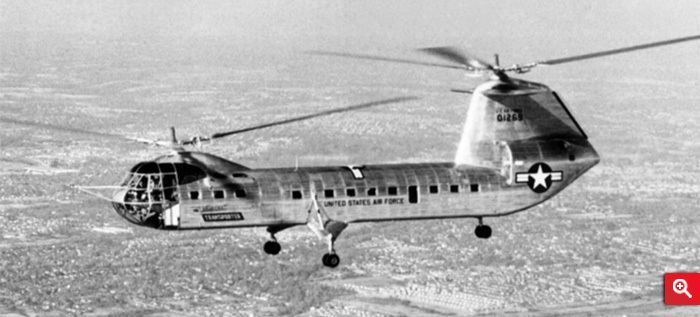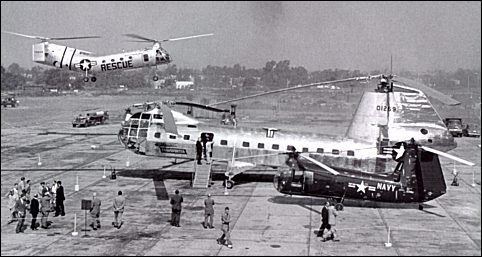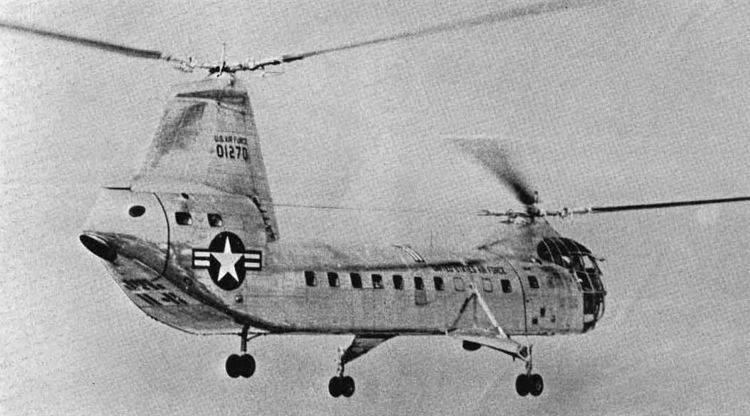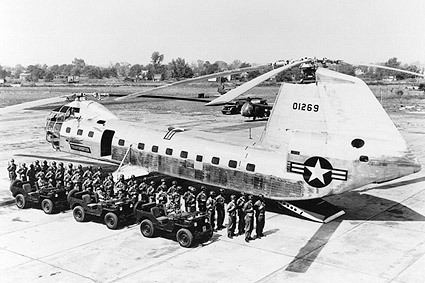 | ||
Piasecki h 16 transporter rotor helicopter
The Piasecki H-16 Transporter (company designation PV-15) was a tandem-rotor transport or rescue helicopter designed by Frank Piasecki and built by Piasecki Helicopter. The prototypes were evaluated by the US Air Force and US Army, but the crash of the second test aircraft led to cancelling the project.
Contents
- Piasecki h 16 transporter rotor helicopter
- Piasecki h 16 transporter
- Design and development
- Crash
- Variants
- Specifications YH 16B
- References

Piasecki h 16 transporter
Design and development

Given the company designation PV-15, the tandem-rotor helicopter was designed by company founder Frank Piasecki. The design was publicly shown for the first time on 15 September 1953 at the Philadelphia airport.
Crash

On 5 January 1956, the second YH-16 test aircraft crashed while returning to Philadelphia from a test flight over New Jersey. The cause of the crash was later determined to be the aft slip ring, which carried flight data from the instrumented rotor blades to the data recorders in the cabin. The slip ring bearings seized, and the resultant torque load severed the instrumentation standpipe inside the aft rotor shaft. A segment of this steel standpipe tilted over and came into contact with the interior of the aluminum rotor shaft, scribing a deepening groove into it. The rotor shaft eventually failed in flight, which in turn led to the aft blades and forward blades desynchronizing and colliding.

The aircraft was a total loss; the two test pilots, Harold Peterson and George Callahan, were killed. This led to the cancellation not only of the YH-16, but also the planned 69-passenger YH-16B version.
Variants

Specifications (YH-16B)
Data from U.S. Army Aircraft Since 1947
General characteristics

Performance
